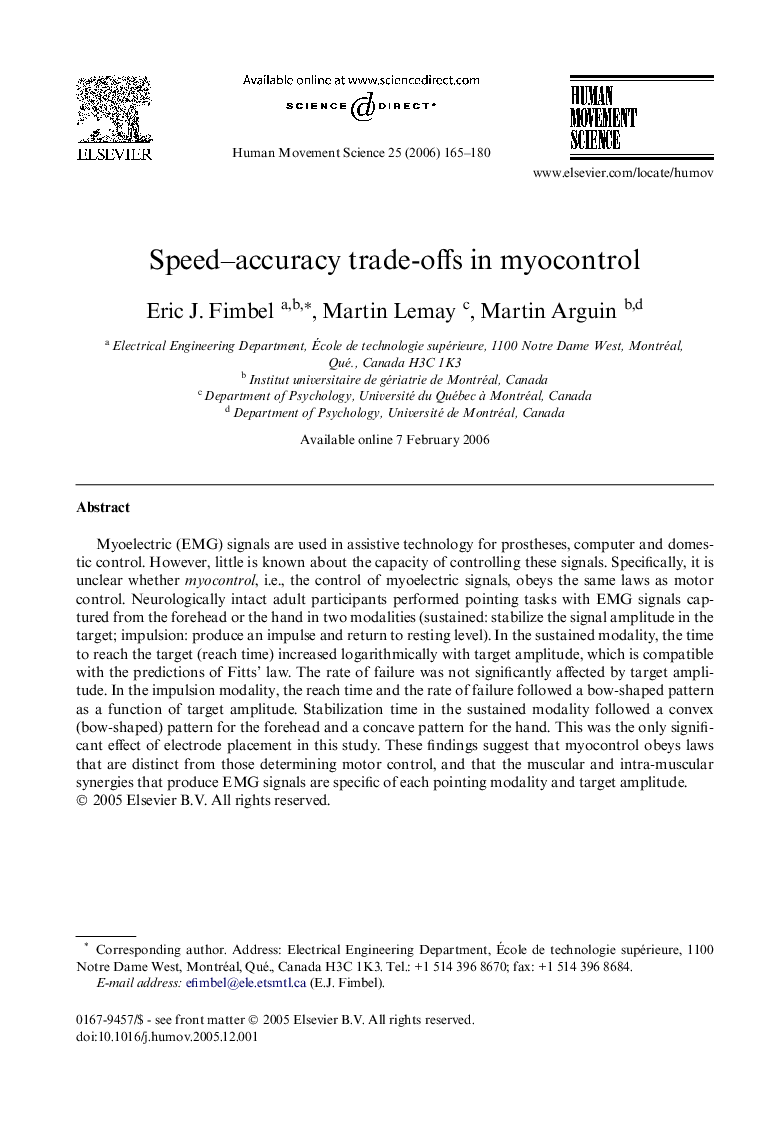| Article ID | Journal | Published Year | Pages | File Type |
|---|---|---|---|---|
| 928950 | Human Movement Science | 2006 | 16 Pages |
Myoelectric (EMG) signals are used in assistive technology for prostheses, computer and domestic control. However, little is known about the capacity of controlling these signals. Specifically, it is unclear whether myocontrol, i.e., the control of myoelectric signals, obeys the same laws as motor control. Neurologically intact adult participants performed pointing tasks with EMG signals captured from the forehead or the hand in two modalities (sustained: stabilize the signal amplitude in the target; impulsion: produce an impulse and return to resting level). In the sustained modality, the time to reach the target (reach time) increased logarithmically with target amplitude, which is compatible with the predictions of Fitts’ law. The rate of failure was not significantly affected by target amplitude. In the impulsion modality, the reach time and the rate of failure followed a bow-shaped pattern as a function of target amplitude. Stabilization time in the sustained modality followed a convex (bow-shaped) pattern for the forehead and a concave pattern for the hand. This was the only significant effect of electrode placement in this study. These findings suggest that myocontrol obeys laws that are distinct from those determining motor control, and that the muscular and intra-muscular synergies that produce EMG signals are specific of each pointing modality and target amplitude.
